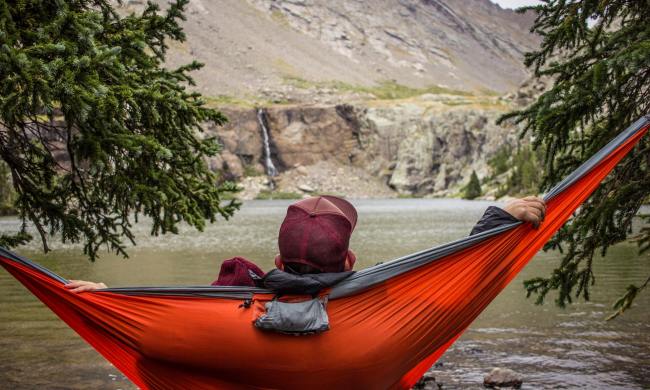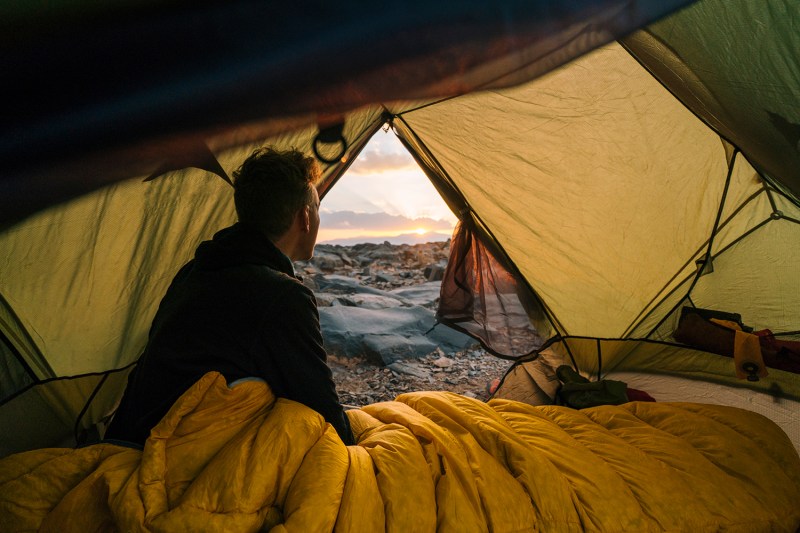
Whether you’re camping, hiking, or backpacking, a good, reliable sleeping bag is what you will need. It’s your last refuge when the sun goes down after hiking or sitting on your camping chair all day. Paired with a good sleeping pad and pillow, a sleeping bag will provide your beauty rest and help you be ready for the next day’s beating — ahem — festivities on the trail.
So before you head on for your next outdoor adventure, here are the best sleeping bags that you can trust to send you off to dreamland. Read on as we’ve also included tips for purchasing the best for you just below our suggestions, including definitions of common terms and the advantages of down and synthetic fill.
Related Guides
Marmot Phase 20 Sleeping Bag
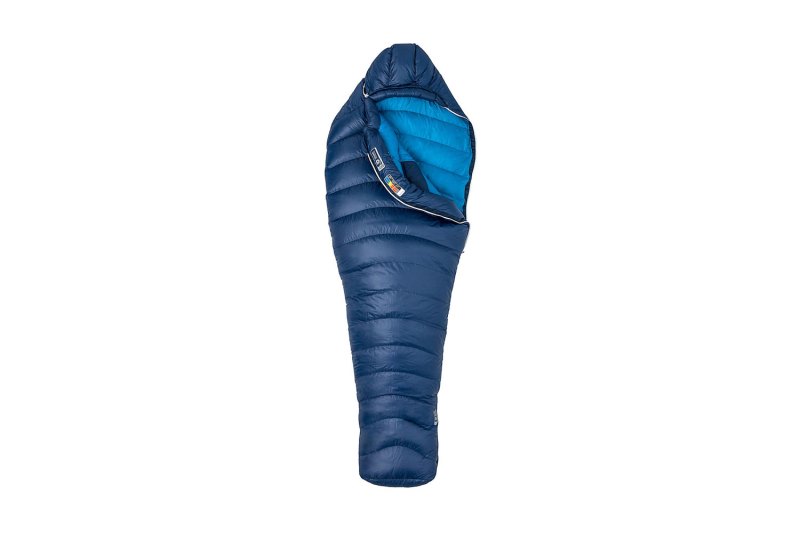
At the same temperature rating, down feather insulation is lighter than synthetic. A good 20-degree Fahrenheit-rated sleeping bag can last decades and keep you warm through any season. The Marmot Phase 20 uses a high-loft 850 fill down covered with the water-resistant Down Defender coating. Continuous compartments, or baffles, go from the top of the bag to the bottom, letting you move down to the top on cooler nights. A small stash pocket inside near the top holds headlamps so you can keep an eye on the wildlife outside your tent. It weighs just 1.5 pounds.
- Weight: 1.5 pounds
- Fill: 850-fill power
- Temperature Rating: 20°F
Therm-a-Rest Hyperion 20 Sleeping Bag
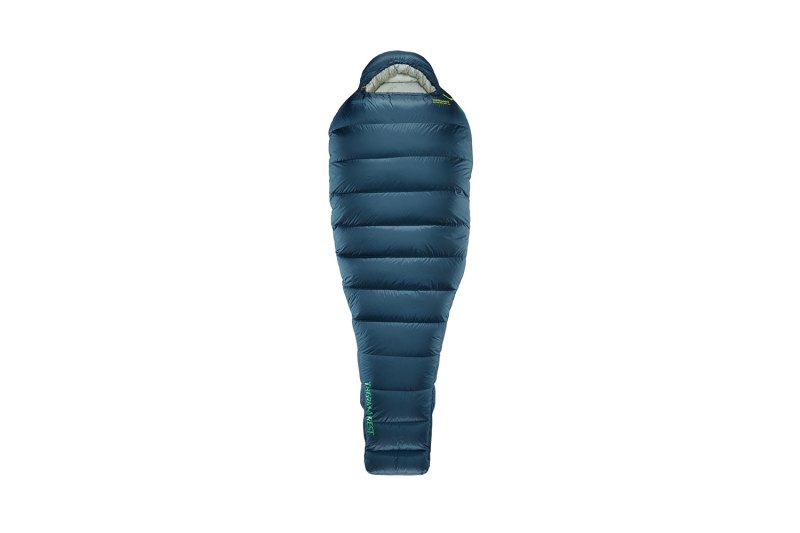
Using the highest loft down available, Therm-a-Rest packs 20 degrees of warmth into 1.25 pounds with the Hyperion 20. The down is coated with a Nikwax Hydrophobic treatment so it resists moisture longer and dries faster. About 70% of the down is in the top of the bag for the highest loft. Removable SynergyLink straps connect to your sleeping pad, so you don’t find yourself in a heap in the bottom of your backpacking tent. The Hyperion is also available in a 30-degree version.
- Weight: 1.25 pounds
- Fill: 900-fill power
- Temperature Rating: 20°F
Nemo Kayu 30 Sleeping Bag
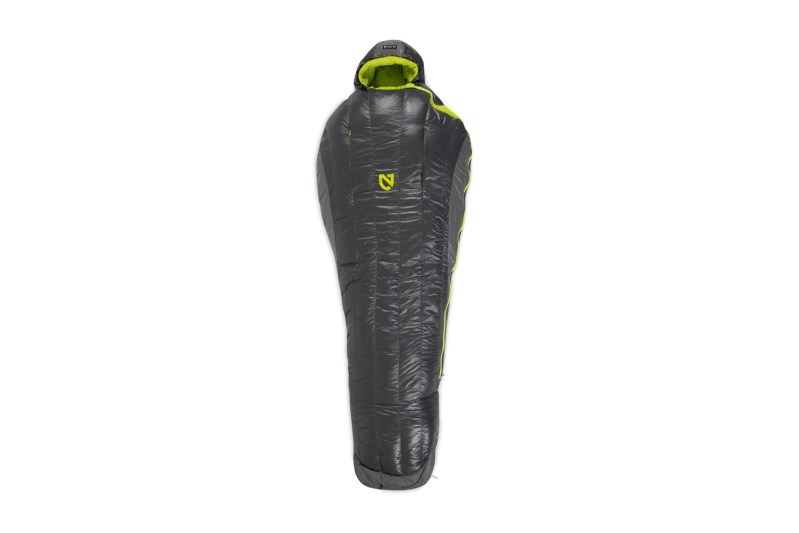
Warm days can be a blessing on the trail but hot nights in a warm bag are a recipe for counting condensation drops on the top of your tent. The Nemo Kayu is a lightweight, 800-fill-power down bag that can release heat without opening the bag. Thermo Gills on top release heat without letting drafts in. The hood and foot box are waterproof so if you do run into tent condensation, it won’t get the down wet. The Kayu 30 weighs in at 0.93 pounds.
- Weight: 0.93 pounds
- Fill:800-fill power
- Temperature Rating: 30°F
Mountain Hardwear Lamina Eco AF 15 Sleeping Bag
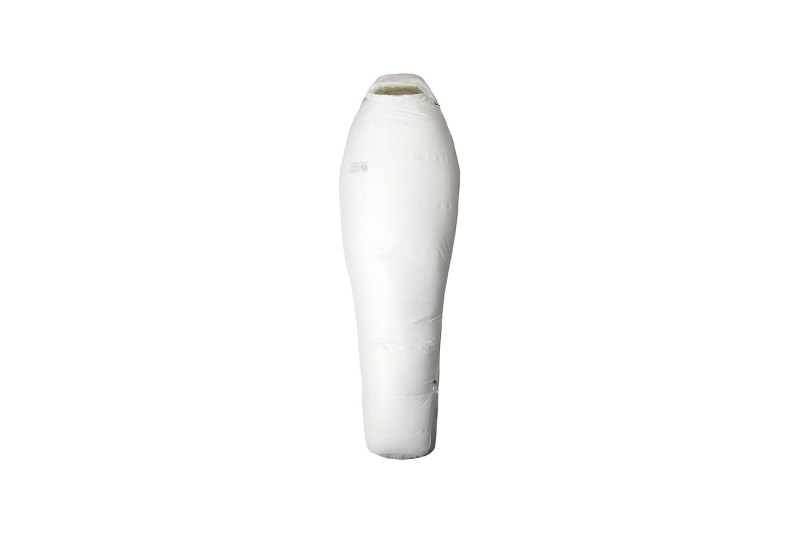
Down feathers make the lightest, most packable insulation we use today in sleeping bags. However, moisture weighs down the feathers resulting in less loft and less warmth. Water-resistant coatings help with the issue but it’s still a concern. Synthetic insulation, like the kind found in the Lamina ECO AF from Mountain Hardwear, doesn’t have that problem. The ThermalQ insulation doesn’t lose loft when wet so you don’t have to worry about moisture conditions or that unplanned swim in the river. The Lamina ECO AF is pushing the limits of sustainable construction with sleeping bags. Most of the materials are completely recycled — the insulation is 70% recycled. Even the 20-denier nylon ripstop shell is left white with no dye for less water use. The toggle on the hood cinch is recycled ocean plastic. It’s not just eco-friendly, it’s Eco AF.
- Weight: 2.5 pounds
- Fill: 625-Fill Power
- Temperature Rating: 15°F
Sierra Designs Synthesis 20 Sleeping Bag
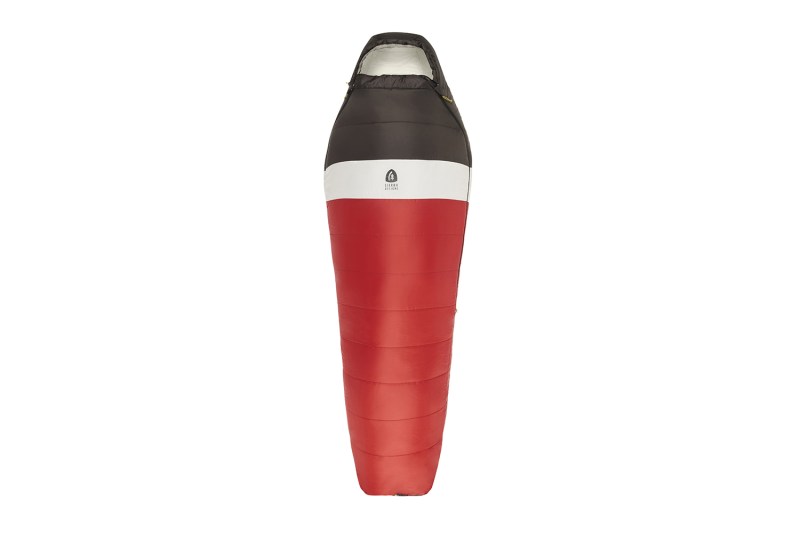
Sierra Designs has made a name for itself by making solid gear at solid prices. The Synthesis 20 bag comes in at only $130, a fraction of the cost of many other bags. It weighs a touch more, but if you only need a bag for a few trips or can’t afford to spend $400 on a bag, Synthesis is a prime choice. Even though it doesn’t have the price of the other bags, it still packs features like a draft collar around the neck, a self-sealing foot vent for warmer nights, and soft nylon taffeta against the skin on the inside. Take care of it and this bag will last you decades.
- Weight: 2.6 pounds
- Fill: 625-Fill Power
- Temperature Rating: 20°F
Montbell Down Hugger 800 Half Length #3 Sleeping Bag
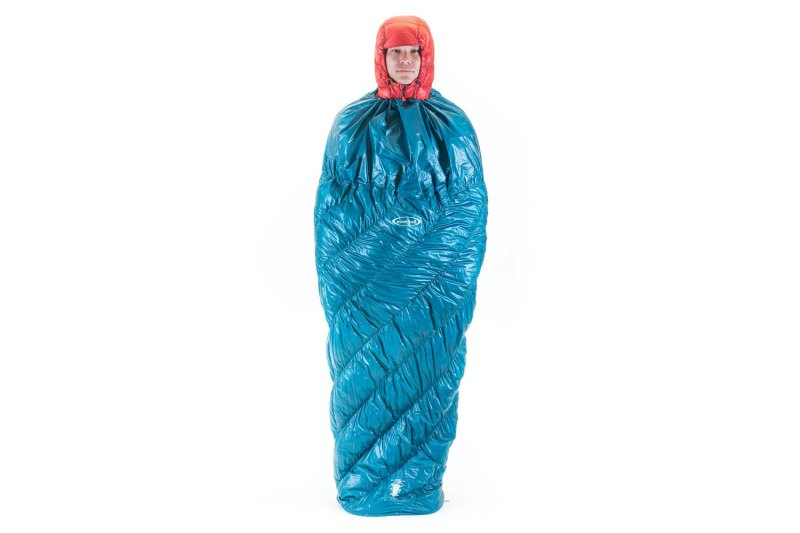
Sleeping bags are a large part of the weight of a pack but you’ll freeze without one. How do we make it lighter? Cut it in half. The Montbell Down Hugger 800 Half Length #3 has insulation up to your chest. From there up, it’s just an ultralight nylon shell. So you don’t actually freeze, you can wear a puffy jacket as the top half of the sleeping bag. The Spiral Stretch construction in the bottom half (and in the Full-Length #3 Down Hugger bag) stretches when you move, but pulls the down insulation close to your body after. The less space around you to heat up, the better. The 30-degree bag weighs 14.7 ounces.
- Weight: 0.91 pounds
- Fill: 800-Fill Power
- Temperature Rating: 30°F
Coleman Brazos Cold Weather Sleeping Bag
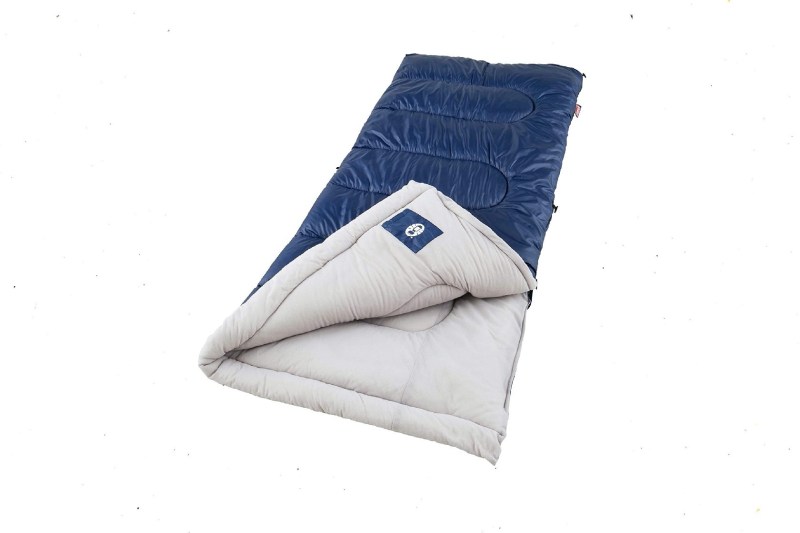
Made with hollow polyester for better heat retention, this lightweight Coleman Brazos Cold Weather Sleeping Bag can keep you warm in temperatures as low as 20 degrees Fahrenheit. Its durable fiber lock construction prevents insulation from shifting, extending the life of the sleeping bag.
- Weight: 7.5 pounds
- Fill: N/A
- Temperature Rating: 40°F
Coolzon Lightweight Sleeping Bag
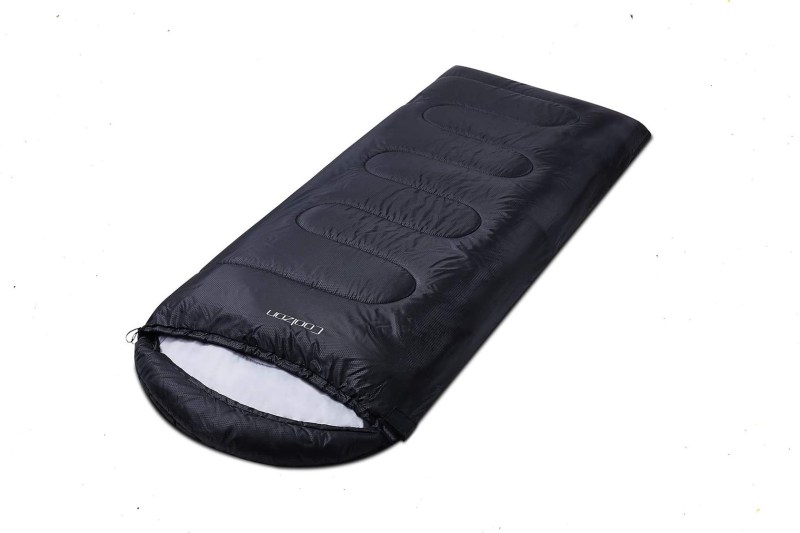
Designed for adults and children alike, this sleeping bag by Coolzon is incredibly spacious which allows you to easily get in, get out, and find the right sleeping position for a deep slumber. This breathable, warm, and waterproof sleeping bag is also equipped with a large capacity compression bag with straps.
- Weight: 4 pounds
- Fill: N/A
- Temperature Rating: 35°F
Oaskys Camping Sleeping Bag
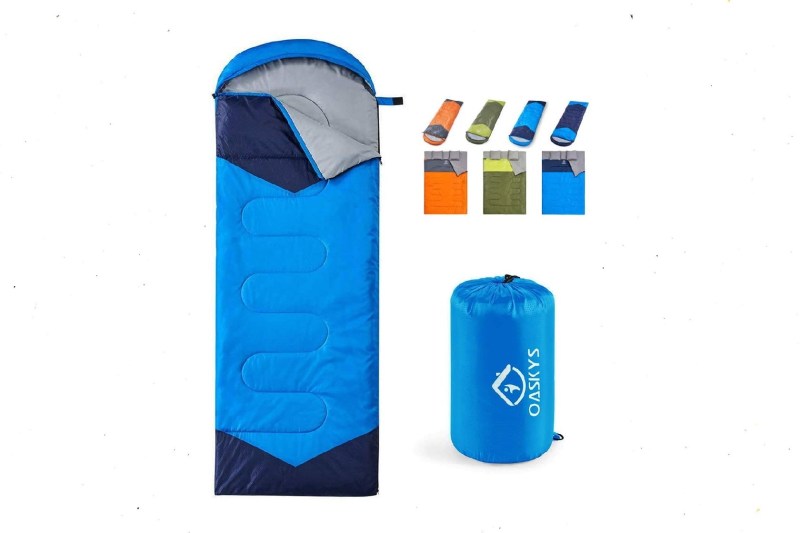
Oaskys’ weather-resistant, camping, sleeping bag is designed to protect you even in extreme conditions, powered by double-filled technology, making it the perfect sleeping bag for almost all kinds of seasons. It features a separated zipper at the bottom, allowing you to stick your feet out, and a half-circle hood with adjustable drawstrings to keep your head warmer even in extreme conditions.
- Weight: 3 pounds
- Fill: 625-Fill Power
- Temperature Rating: 20°F
Tuphen Sleeping Bag
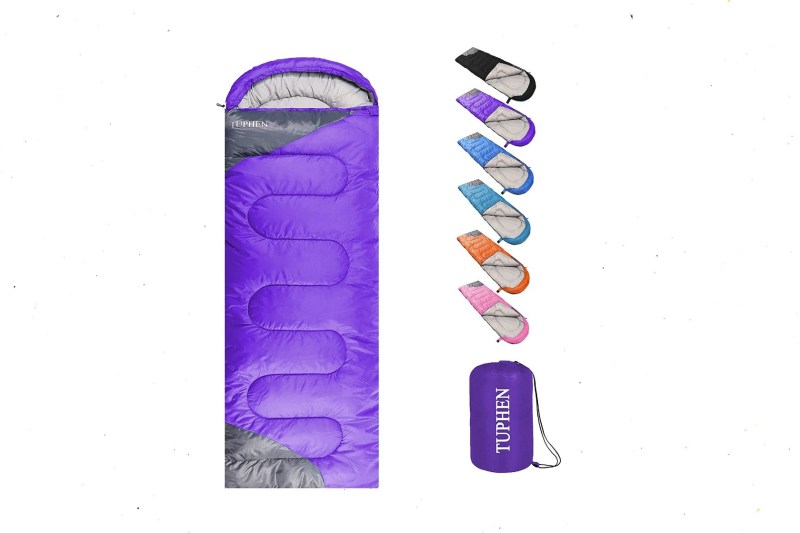
Tuphen’s travel-friendly sleeping bag features a compression sack with straps for carrying and storing purposes, a two-way zipper with ‘zipper guards’ to prevent hooks from being stuck, and a separated zipper at the bottom for your feet. This lightweight and breathable sleeping bag is perfect for people of all ages regardless of the season. It can also be either wiped clean or machine washed, making it the most convenient sleeping bag for you.
- Weight: 3 pounds
- Fill: 800-Fill Power
- Temperature Rating: 40°F
Tips for Buying a Sleeping Bag
Common Terms Explained
- Loft: Loft refers to the puffiness of the insulation. Puffier means higher loft. A higher loft means more warmth. An example of a low loft would be 550 fill power; 900 fill power is a high loft.
- Denier: Sometimes abbreviated as D, denier is the thickness of fabric. A common sleeping bag fabric would be 20-denier fabric which is fairly lightweight; 10 denier is very lightweight.
- Mummy cut: Mummy-shaped bags are cut tight to your body to eliminate extra air space.
- Baffle: These are the compartments of insulation around the bag. Sometimes you can move insulation from top to bottom while staying in a baffle.
- Draft tube: This blocks drafts from coming in the zipper.
- Draft collar: This keeps heat from escaping from the head opening.
Temperature Rating
Temperature ratings on sleeping bags can be a bit deceiving. Most list the lower limit temperature rating. For example, the 20 in the Therm-a-Rest Hyperion 20 refers to 20 degrees Fahrenheit. This temperature is the lowest limit at which a man or warm sleeper can be comfortable and it typically used on men’s sleeping bags. The comfort rating is the temperature a woman or cold sleeper would feel comfortable in. Below the lower limit temperature rating, you’re at risk for hypothermia. Don’t go there.
Fill: Synthetic v. Down
Sleeping bags have either synthetic or down fill. Synthetic is less expensive and doesn’t lose loft when it’s wet. Less loft means less warmth. Down is lighter and more compressible so it will take up less space in your pack. However, it’s susceptible to moisture, leading to less loft. Water-resistant down is available now, which helps but doesn’t completely get rid of the issue. Be mindful of the trade-off between lower prices and warmer ratings versus packability.
Water Resistance
Condensation can form in your tent and touching it could get the insulation wet. Waterproof or water-resistant parts of a sleeping bag prevent this. Some down fill is treated with a water-resistant coating so it doesn’t lose loft as fast and dry quickly.
Quilts
Looking for comfortable quilts to travel with in all your outdoor adventuring? We just talked about sleeping bags but many manufacturers are launching backcountry quilts. They are lightweight blankets with down or synthetic insulation and no zippers. You can wrap them around you or just drape them on top. They often save considerable weight in your pack by not having a bottom.
What’s Best for You?
In the end, what’s best for you depends on your situation. If the trip might be very wet or humid, a synthetic bag might be a wise choice. If it’s going to be warm or weight is a critical consideration, then try down. As always, test your gear before you leave so you don’t end up shivering your hood toggles off.
